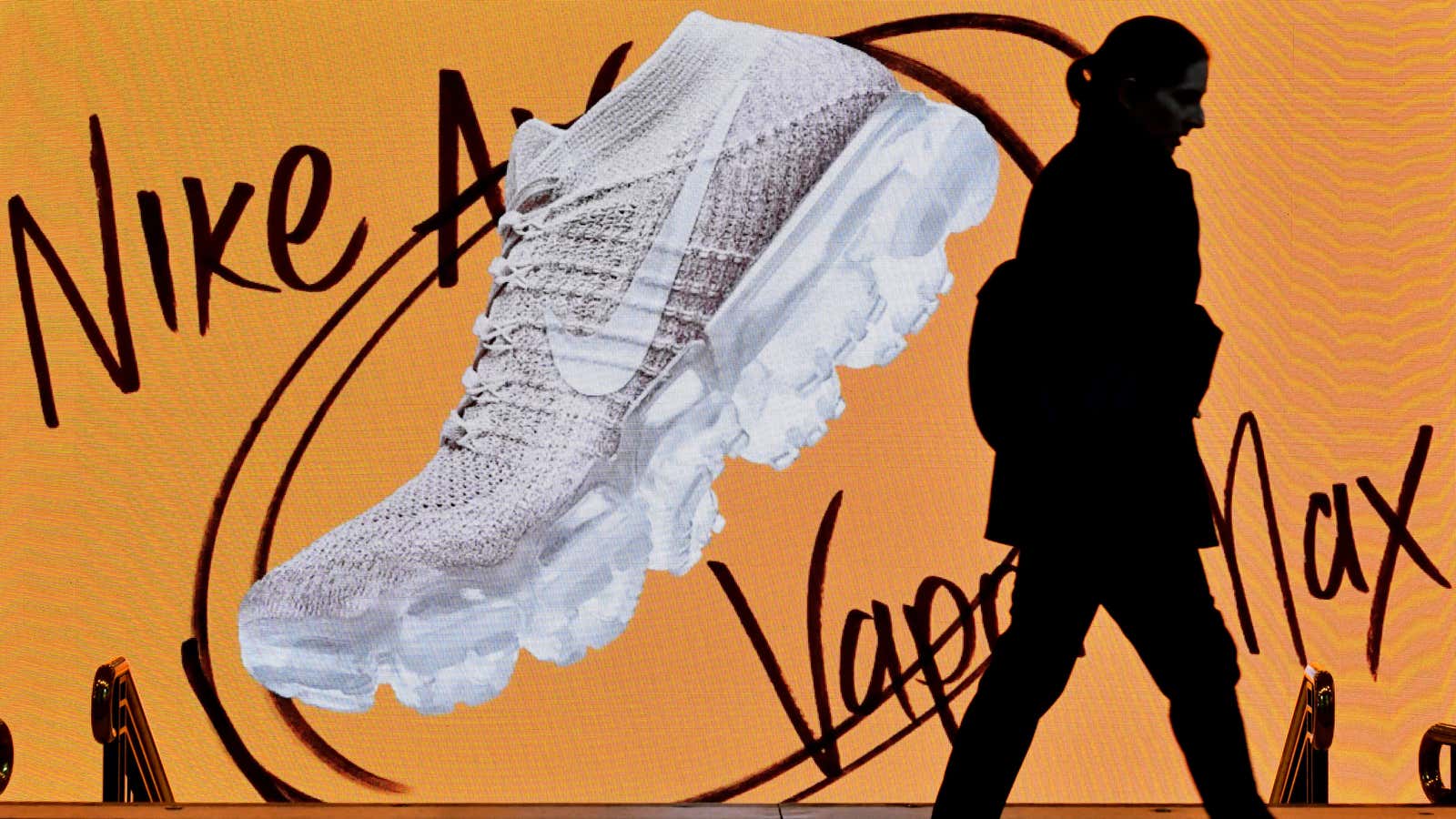The chart below is not what you want to see if you’re Nike.
After years of sustained growth, Nike’s business is straining to inch forward. In the quarter ending Aug. 31 2017, Nike had $9.07 billion in sales, still a staggering amount, but barely ahead of the $9.06 billion it brought in over the same period the year before. More concerning still are the company’s profits, which dropped 24% in the recent quarter.
These results aren’t a big surprise: The sneaker giant expected sales to be more or less flat. It’s facing a number of challenges right now, but none more critical than its struggles in North America, the company’s home turf and the world’s biggest sportswear market. On a call with investors yesterday (Sep. 26), Nike executives talked about the disruptions going on in US retail, including shoppers’ addiction to discounts and the shift to e-commerce that’s causing headaches for brick-and-mortar retailers. Sales in the region fell 3% during the quarter, enough to offset the strong growth it saw overseas, especially in China.
At Nike’s big US retail partners, such as Foot Locker and Dick’s, customers aren’t buying Nike products the way they used to. It’s strongest competitor, Adidas, is eating into its sales, and Nike hasn’t responded well to a fashion shift away from performance shoes, continuing to release running and basketball sneakers that too often wind up heavily discounted on sales racks.
Nike’s Jordan brand, in particular, has faced problems. It has always thrived on exclusivity, but analysts believe it may have tarnished its image by putting out too many shoes, many of which are the old styles the brand has long leaned on and don’t offer anything fresh. Adidas managed to overtake Jordan as the number-two brand in US sports footwear recently, largely by capitalizing on the fashion shifts in the US, according to the research firm NPD Group.
Nike is actively working on these issues. On yesterday’s call, Nike brand president Trevor Edwards said he is focused on managing the brand’s “balance between scarcity and scale.” And while Nike anticipates more upheaval in US retail in the future, it sees a bright spot in its direct-to-consumer sales. In the long term, it believes it can count on customers to pay full price for its shoes, as long as it gives them innovation. Its new Air VaporMax sneakers, which take the cushioning of Nike’s Air platform but remove the bulk, stiffness, and weight of previous models, are selling well, the company said, even though they cost upwards of $150.
Sales in North America are likely to continue their stumble for the next few months, but Nike expects them to get back on track afterward, thanks to new products and upcoming events that should generate some excitement around the brand. “I’m very bullish—we’re very bullish—on what’s coming down the pipeline,” Nike CEO Mark Parker said.
Is Nike overconfident? Even great empires can fall, and Adidas is on a roll and will continue trying to steal market share. It’s also true that once customers get hooked on discounts, it’s tough to wean them off. But Nike can still count on years of growth overseas—and the brand has never been one to back down from a challenge.
